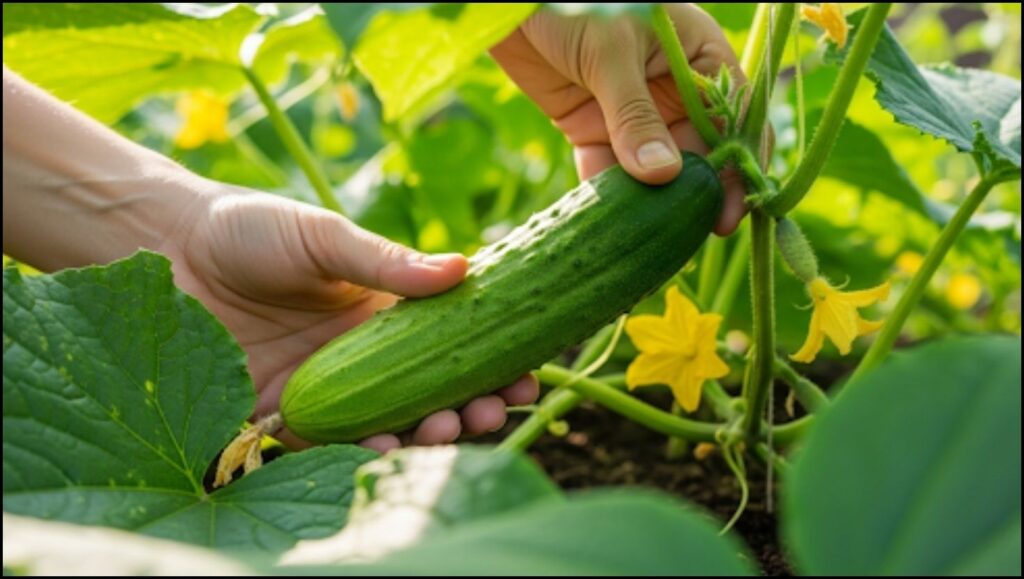As households worldwide grapple with rising food prices and a renewed focus on sustainable living, the trend of home gardening is experiencing significant growth. Among the most popular choices for novice gardeners is the cucumber, a versatile and productive plant. This guide provides a detailed, evidence-based approach on how to start growing cucumbers at home, transforming a small patch of soil or a sunny balcony into a source of fresh produce.

The Growing Appeal of Home Produce
The movement towards home gardening is driven by several practical and philosophical factors. According to a 2023 report from the National Gardening Association, millions of households have taken up growing their own food, citing better taste, improved nutrition, and cost savings as primary motivators. Growing vegetables at home gives individuals direct control over their food source, eliminating concerns about pesticides and long-distance transportation.
“When you grow your own food, you are the final quality control,” stated Dr. Sarah Williams, a horticulturalist at the University of California Agriculture and Natural Resources. “This connection not only yields healthier produce but also fosters a greater appreciation for the food system.” The cucumber (Cucumis sativus) is often recommended for beginners due to its relatively fast growth cycle and high yield, making the experience of growing vegetables rewarding.
A Step-by-Step Guide: How to Start Growing Cucumbers at Home
Successfully cultivating cucumbers hinges on understanding their fundamental needs: sunlight, water, and support. The process can be broken down into a few manageable steps, from selecting the right variety to harvesting the fruit.
Choosing the Right Cucumber Variety
The first step is selecting a cucumber type that suits your space and culinary needs. There are two primary growth habits:
- Vining Cucumbers: These are the most common type. The plants produce long vines that can be trained up a trellis, fence, or stake. This vertical growth habit is ideal for saving space in smaller gardens and improves air circulation, which can reduce disease risk, according to guidance from the Cornell University Extension. Varieties include ‘Marketmore 76’ (slicing) and ‘Boston Pickling’ (pickling).
- Bush Cucumbers: These varieties grow in a more compact, bush-like form and are well-suited for container gardening or gardens with limited space. While their yield may be smaller than vining types, varieties like ‘Spacemaster’ and ‘Bush Champion’ are excellent for patios and balconies.
Planting: Timing, Soil, and Technique
Cucumbers are warm-season crops that are highly sensitive to frost. Plant seeds directly in the garden or in containers only after all danger of frost has passed and the soil temperature has reached at least 70°F (21°C).
For optimal growth, cucumbers require fertile, well-draining soil with a pH between 6.0 and 7.0. The Old Farmer’s Almanac recommends enriching the soil with aged compost or other organic matter before planting. Plant seeds about 1 inch deep. For vining types grown on a trellis, space them about 1 foot apart. For bush varieties, follow the specific spacing instructions on the seed packet, typically 2 to 3 feet apart.

Essential Care: Sun, Water, and Support
Once planted, consistent care is crucial for a healthy crop.
- Sunlight: Cucumbers thrive in full sun, requiring at least 6 to 8 hours of direct sunlight per day.
- Watering: Consistent moisture is key. The soil should be kept evenly moist but not waterlogged. According to experts at the Penn State Extension, providing about 1 inch of water per week is a general rule, with more required during hot, dry periods. Watering at the base of the plant in the morning helps prevent fungal diseases like powdery mildew.
- Support: For vining varieties, installing a trellis or cage at the time of planting provides support for the growing vines. This keeps the fruit off the ground, resulting in straighter, cleaner cucumbers and making them easier to harvest.
Harvesting and Managing Common Issues
Cucumbers typically mature in 50 to 70 days. The ideal time to harvest depends on the variety and its intended use. Slicing cucumbers are best when they are 6 to 8 inches long, uniformly green, and firm. Pickling varieties should be harvested when they are smaller, around 2 to 4 inches long.
“Harvest regularly,” advises the Royal Horticultural Society. “Leaving overripe cucumbers on the vine will signal the plant to stop producing.” Use a knife or pruning shears to cut the stem about a quarter inch from the fruit to avoid damaging the vine.
Even with proper care, gardeners may encounter pests like cucumber beetles and aphids. The U.S. Environmental Protection Agency (EPA) encourages using integrated pest management (IPM) strategies, such as introducing beneficial insects like ladybugs, using floating row covers, or applying insecticidal soap as a last resort. For home gardeners looking to expand their skills, the principles learned from growing cucumbers can be applied to a wide range of other vegetables. The initial investment of time and effort often pays dividends in the form of fresh, homegrown food and a more sustainable lifestyle.
Guide to Thriving 15 Shade-Loving Vegetables That Flourish With Little to No Sun
